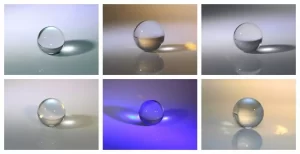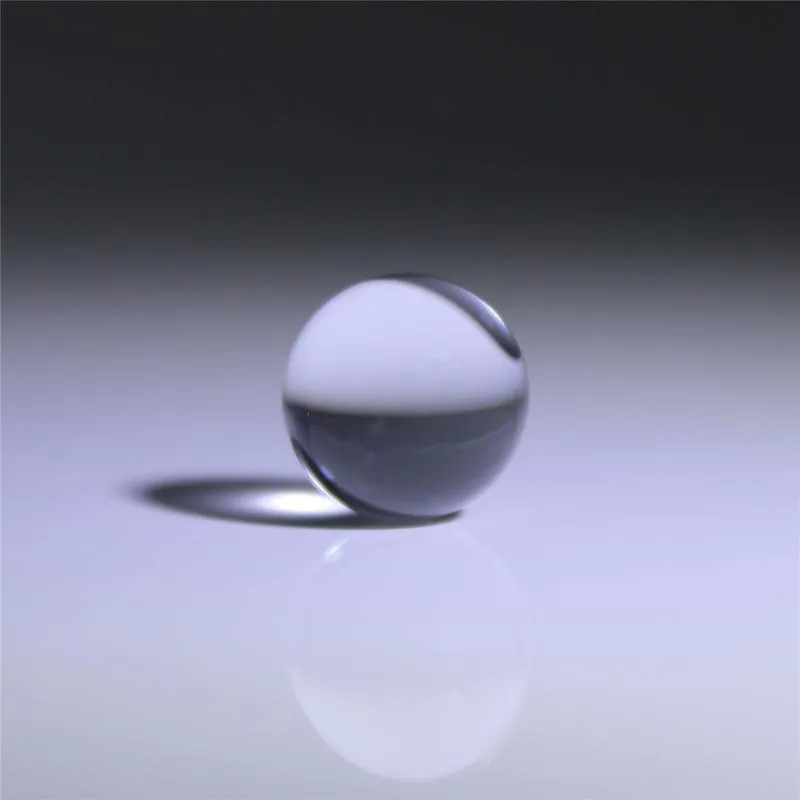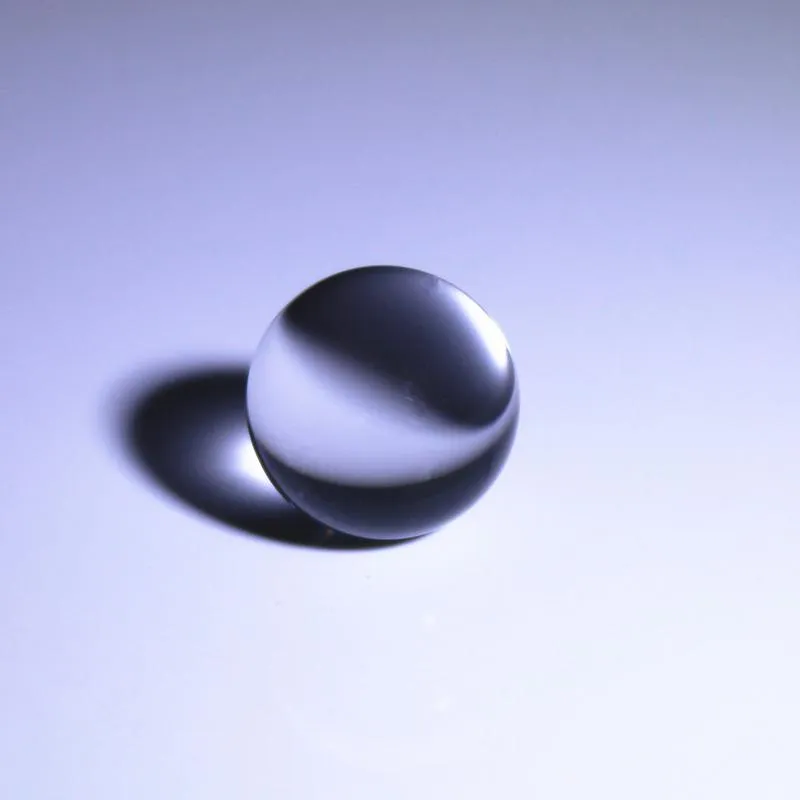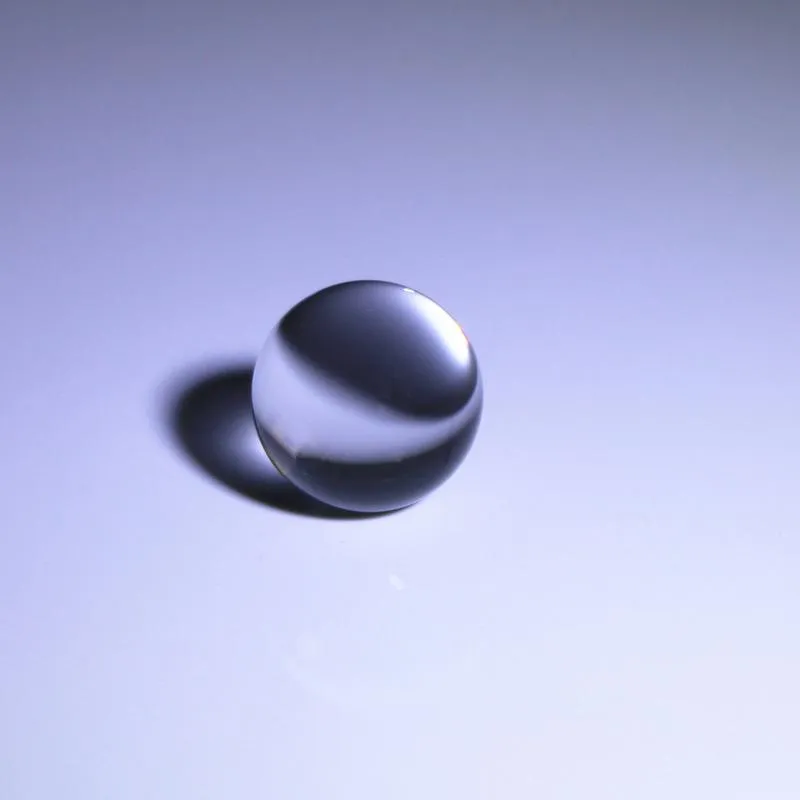Diameter 12mm K9 glass ball lens
Diameter: 0.50mm-150mm
Tolerance: 0.001-0.003
Sphericity: 0.001
Surface Quality: 20-10 or better
Coating: Optional
Ball lenses are great optical components for improving signal coupling between fibers, emitters, and detectors. They are also used in endoscopy, bar code scanning, ball pre-forms for aspheric lenses, and sensor applications. Ball lens are manufactured from a single substrate of glass and can focus or collimate light, depending upon the geometry of the input source. Half-ball lenses are also common and can be interchanged with full ball lenses if the physical constraints of an application require a more compact design.
What is ball lens/ball lenses?
Ball lenses are great optical components for improving signal coupling between fibers, emitters, and detectors. They are also used in endoscopy, bar code scanning, ball pre-forms for aspheric lenses, and sensor applications. Ball lens are manufactured from a single substrate of glass and can focus or collimate light, depending upon the geometry of the input source. Half-ball lenses are also common and can be interchanged with full ball lenses if the physical constraints of an application require a more compact design.

Why use a ball lens/ball lenses?
A sphere or ball performs surprisingly well as a lens. At closer scrutiny, one finds that such an element can be broken down into two plano-convex lenses, separated by a plane-parallel plate. The positive lenses have under-corrected spherical aberration and the plane-parallel plate is over-corrected. Therefore, there is a compensating effect. A ball lens finds its main application as a coupling element for optical fibers. It deserves an analysis, especially since there are certain limitations that need to be understood.
The figure below indicates that the focal length is measured from the center of the sphere, where the extensions of the entering and exiting rays meet. This means that the back focal distance bfl is merely the difference between the focal length and the radius R of the sphere. One can see immediately that the focus falls on the rear surface of the sphere if f = R
Focal length of the ball lens/ball lenses
There are two different definitions of focal length of a ball lens. The effective focal length, which is the distance between a plane through the center of the lens and the waist(focus) of an initially collimated input beam, is given by the equation ![]() where D is the diameter of the lens ball and n its refractive index.
where D is the diameter of the lens ball and n its refractive index.
The back focal length is defined as the distance of the focal point from the lens surface, and is smaller than the effective focal length by half the diameter of the ball.
Applications of ball lens/ sphere lens.
Spherical Ball are commonly used for laser collimating and focusing, laser-to-fiber coupling, fiber-to-fiber coupling, and fiber-to-detector coupling. Half ball is ideal for applications such as fiber communication, endoscopy, microscopy, optical pick-up devices, and laser measurement systems.
For Examples:
EXAMPLE 1: LASER TO FIBER COUPLING
When coupling light from a laser into a fiber optic, the choice of ball lens is dependent on the NA of the fiber and the diameter of the laser beam, or the input source. The diameter of the laser beam is used to determine the NA of the ball lens. The NA of the ball lens must be less than or equal to the NA of the fiber optic in order to couple all of the light. The ball lens is placed at its back focal length from the fiber as shown as follow.
LASER TO FIBER COUPLING
Initial Parameters
Diameter of Input Laser Beam = 2mm
Index of Refraction of Ball Lens = 1.5168
Numerical Aperture of Fiber Optic = 0.22
The NA of an N-BK7 ball lens is about 0.22 for d/D ≈ 0.3 to 0.35. Equation 3 yields d/D ≈ 0.33 for NA = 0.22. You would need an N-BK7 ball lens with a diameter greater than 6mm (≈ 2mm/0.33) to couple a 2mm laser source into a 0.22 NA fiber optic. One can easily try different indices of refraction in order to find the best ball lens for a laser-to-fiber coupling application.
EXAMPLE 2: FIBER TO FIBER COUPLING
To couple light from one fiber optic to another fiber optic of similar NA, two identical ball lenses can be used. Place the two ball lenses at the back focal length from the fibers as shown in Figure 4. If the optical fibers have the same NA, then the same logic as in Example 1 can be applied.
Regular specifications of our ball lens
|
Material |
BK7, LaSFN9 glass or other optical glass |
|
Surface Quality |
80/60-20/10 |
|
Diameter |
1m |
|
Coating |
optional |
|
Diameter Tolerance |
+0.1/-0.1 |
Our Ordering Process
Send us your request with detailed specifications
Receive a commercial offer with terms and costs
After your approval, we handle manufacturing, quality control, and shipping
📦 Shipping
3-5 days in EU, from 10 days to USA
💳 Payment methods
Cash, Bank Transfer, Cards (Visa, Mastercard, Amex, Discover) and PayPal
💬 Questions?
Contact us via WhatsApp, phone, live chat or email




